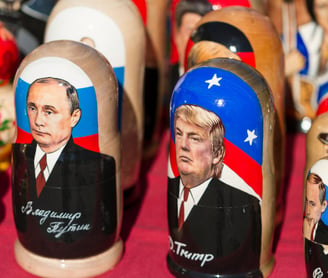Russia Cuts Interest Rates to 20% in First Reduction Since 2022 as Inflation Shows Signs of Easing
ECONOMY


Central Bank Lowers Benchmark Rate Amid Moderating Inflation Pressures
Russia’s central bank announced a 100 basis point cut to its key interest rate on Friday, lowering it from 21% to 20%. This marks the first rate reduction since September 2022, when the bank raised rates to counter soaring inflation following Russia’s full-scale invasion of Ukraine. The 20% benchmark is still historically high, remaining above most global peers, but signals a cautious shift amid easing inflationary pressures.
Seasonally adjusted inflation in April stood at 6.2%, down from an average of 8.2% in the first quarter of 2025, the bank reported. In its statement, the Bank of Russia emphasized that while domestic demand growth continues to outpace supply capabilities, the economy is “gradually returning to a balanced growth path.” It also affirmed that monetary policy would remain tight “for a long period” to bring inflation back to its 4% target.
Economic Challenges Amid War and Geopolitical Strain
The war in Ukraine, now in its fourth year, has severely disrupted Russia’s economy. The ruble weakened sharply after the invasion, driving up import costs and exacerbating inflationary pressures. The country’s economic strategy has since shifted toward greater self-reliance and defense-related manufacturing.
Despite an initial rebound in gross domestic product (GDP) growth following sharp contractions in 2022 and early 2023, Russia’s economy slowed to 1.4% growth in the first quarter of 2025, down from 4.5% at the end of 2024. Much of this growth has been concentrated in manufacturing sectors related to defense, bolstered by sustained government spending.
Economic Minister Maxim Reshetnikov had advocated for a rate cut earlier in the week, citing concerns about weakening output in various sectors. However, persistent supply-demand imbalances caused by the war suggest continued restrictions on monetary policy.
Currency and Market Reactions
Despite ongoing geopolitical tensions, the ruble has been the best-performing currency globally in 2025, according to Bank of America. This resilience is attributed to capital controls, tight monetary policy, and a weakening U.S. dollar.
Following the rate cut announcement, the dollar gained 2.72% against the ruble on Friday, reflecting market adjustments to the unexpected policy easing. Nicholas Farr, an emerging Europe economist at Capital Economics, described the move as a “dovish surprise” to the market, indicating a larger-than-anticipated rate reduction. Farr revised his year-end forecast to 17%, down from a prior 18%, while cautioning that Russia’s economic imbalances necessitate maintaining restrictive interest rates.
Outlook for Monetary Policy and Inflation
The Bank of Russia’s decision underscores the balancing act between supporting economic growth and controlling inflation amid ongoing war-driven challenges. While the rate cut signals growing confidence in moderating inflation, the central bank reiterated its commitment to a tight policy stance to achieve its 4% inflation target.
Analysts expect further cautious easing, contingent on the evolving geopolitical landscape and economic data. The persistence of supply bottlenecks and fiscal pressures means Russia’s monetary policy will likely remain restrictive for the foreseeable future, even as inflation shows signs of subsiding.
